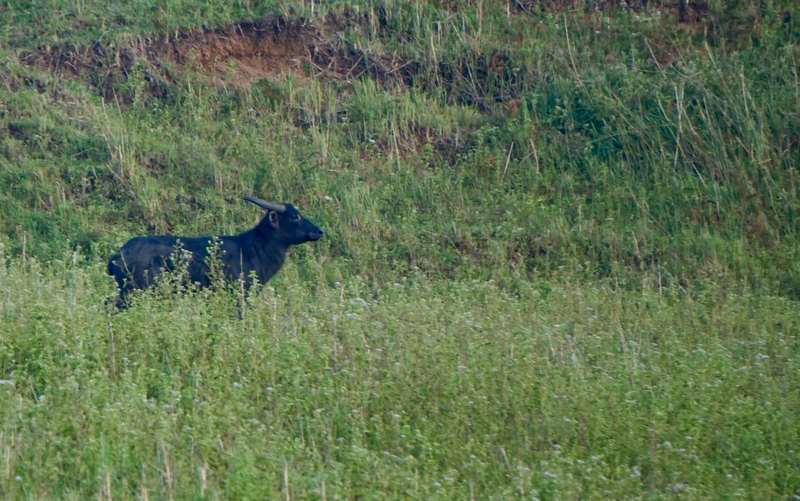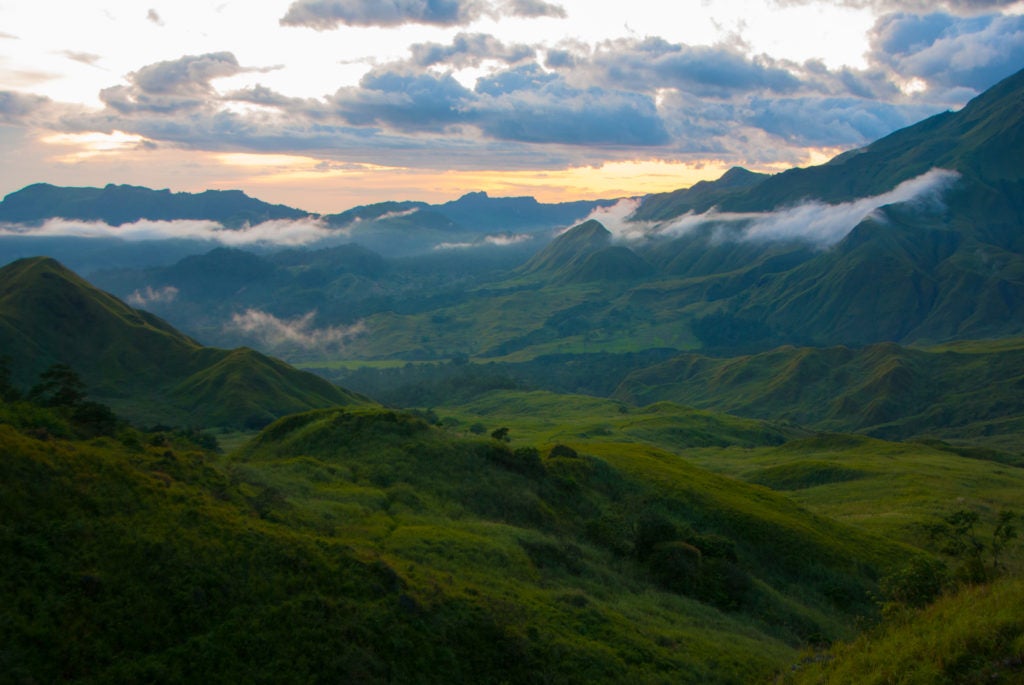Tamaraw
donateRe:wilding Tamaraw
The Tamaraw is a dwarf wild buffalo only found on Mindoro Island in the Philippines. At a glance, a Tamaraw might be mistaken for a domestic buffalo, but its V-shaped horns, much smaller frame and feisty personality sets it apart. Listed as Critically Endangered on the IUCN Red List of Threatened Species, there are only about 500 Tamaraw left on Mindoro. About 80% live in Mounts Iglit-Baco Natural Park, and two other small populations – ranging around 50 and 12 individuals – live elsewhere on the island. Additional small populations may also survive. These numbers are a fraction of the Tamaraw’s historical population and without immediate help, these isolated subpopulations may go extinct within the next few decades.
At the turn of the 20th century there were more than 10,000 Tamaraw living on Mindoro. Hunting, poaching, disease spread from domestic cattle, habitat destruction from non-sustainable land use – even invasive plants that the animals can’t eat – have dramatically reduced the population. And with females averaging just one offspring every two years, the species will need immediate and effective conservation efforts to survive.
Re:wild has helped develop an ambitious conservation plan in lockstep with numerous partners committed to restoring the Tamaraw across Mindoro. The bold vision behind The National Tamaraw Conservation Action Plan – created by a team of more than 70 conservationists, policymakers and Indigenous peoples – is as simple as it is ambitious: by the year 2050, the Tamaraw will thrive in rewilded habitats and in coexistence with Indigenous peoples across Mindoro.
The Philippines’ National Tamaraw Conservation Action Plan is designed to protect and recover Tamaraw in Mindoro. Through the National Tamaraw Conservation Action plan, partners across Mindoro and international partners like Re:wild will strive to:
locate and protect all the remaining populations of Tamaraw, helping them increase to viable numbers
end all Tamaraw poaching
work with cattle ranchers to prevent the spread of disease from domestic cattle
manage invasive species
work with local communities to manage their land in ways that mesh cultural needs with Tamaraw recovery
A Park that Recognizes Indigenous Lands
Since the majority of wild Tamaraw live in Mounts Iglit-Baco, a Key Biodiversity Area, any effort to save them also needs to protect that area as well. In 2018, the government of the Philippines designated Mounts Iglit-Baco a Natural Park, and committed to protect its rich biodiversity by creating a comprehensive management plan.
The park is not only home to Tamaraw, it also overlaps with the territories of two Indigenous peoples, the Buhid and Tau-Buid. Both tribes are part of the eight ethnolinguistic groups that make up the Mangyan indigenous people of Mindoro, and representatives from these Indigenous groups are instrumental in designing a long-term strategy for the park and the Tamaraw.
Re:wild has joined forces with local government agencies, leadership from Indigenous communities, D’Aboville Foundation, the administration of the Natural Park, the government’s Tamaraw Conservation Program, MBCFI, the IUCN SSC Asian Cattle Specialist Group and other local groups to develop a 10-year protected area management plan for Mounts Iglit-Baco Natural Park. The plan launched in 2019 and takes a holistic approach to:
save the Tamaraw in the wild,
integrate the cultural and developmental needs of the Indigenous people into the management of Mounts Iglit-Baco
address the non-sustainable use of natural resources in the region
As part of the plan, Re:wild and its partners are helping the Tau-Buid people receive official recognition of their ancestral lands, which will ensure that they are permanently included in any strategy to protect Mounts Iglit-Baco. The plan provides a rational framework for managing and monitoring the park focusing on conservation, land use, Indigenous communities, wildlife crime prevention, tourism and awareness.
In 2020, Re:wild and its partners in the Philippines received a prestigious Darwin Initiative grant to support the protected area management office for Mounts Iglit-Baco Natural Park and the Department of Environment and Natural Resources’s Tamaraw Conservation Program. The grant will help implement the comprehensive plan that will result in the Tau-Buid co-managing the park and the remaining Tamaraw stay protected.





